ON INTERNATIONAL ANTI-CORRUPTION DAY, FIGHTING ECONOMIC EVIL
With new standards in the works, ISO joins the fight. [CONSUMERS, MANAGEMENT SYSTEMS, BUSINESS & ANTI-BRIBERY] Corruption threatens national security, economic growth, human rights, jobs,
ISO 22301:2012 is an international standard for BUSINESS CONTINUITY MANAGEMENT SYSTEMS
ISO 22301:2012 is a business continuity management systems standard that can be utilised by businesses of all sizes and types. These businesses will be able to receive certification against this standard, demonstrating to legislators, regulators, customers, prospective customers, and other stakeholders that they are following best practises in business continuity. The business continuity manager can also use ISO 22301 to demonstrate to upper management that a recognised standard has been met.
Incidents can occur at any time, and implementing ISO 22301:2012 will guarantee that organisations are prepared to respond and maintain operations. Large-scale natural disasters and acts of terrorism, as well as technology-related catastrophes and environmental catastrophes, are all examples of events. The majority of occurrences, though, are minor but can have a substantial impact, which is why business continuity is so important all the time.
ISO 22301:2012 is a framework for planning, establishing, implementing, operating, monitoring, reviewing, maintaining, and improving a business continuity management system (BCMS). It is expected to assist businesses in preventing, preparing for, responding to, and recovering from disruptive situations.
ISO 22301:2012 is the first standard to be released that follows the new ISO approach for developing management system standards. This will make it easier to comprehend and maintain consistency with other management systems like ISO 9001 (quality management), ISO 14001 (environmental management), and ISO/IEC 27001 (information security management)
ISO 22301:2012’s fundamental philosophy is based on analysing impacts and managing risks: determine which activities are more essential and which hazards may affect them, and then treat those risks systematically. Policies, processes, and technical/physical implementation are common forms of strategies and solutions to be implemented (e.g., facilities, software, and equipment).
ISO 22301:2019 has replaced ISO 22301:2012, which was based on BS 25999-2 from the United Kingdom. This year’s edition makes no major changes, but it does provide enterprises and their consumers with more flexibility and less prescriptiveness, increasing their value.
In the form of a Disaster Recovery Plan, business continuity management outlines the procedures you must take in the event of an incident (DRP). A Disaster Recovery Plan (DRP) is a well-documented, well-organized business continuity strategy that explains how to handle disruptive events.
Following a more extensive business impact study, which helps identify where the most significant impact and implications from an occurrence are, the Disaster Recovery Plan is created.
A short-term arrangement to mend and rebuild important business systems, as well as a plan to handle problems such as root cause identification and a long-term preventative approach, should be included in your DRP.
ISO 22301:2012 establishes a framework based on worldwide best practices and centered on the “Plan, Do, Check, Act” idea.
Whether it’s a global calamity or a localized outage, your company will be able to rapidly get back up and running or at least minimise the disturbance until normal service is resumed.
Opens up new markets and aids in the acquisition of new business. Gain client confidence by using ISO standards, which are universally accepted and open up global opportunities.
Gives you a marketing advantage and, when combined with certification, can help you save money on tenders.
You’ll be able to reduce the cost of internal and external BCM audits, improve financial performance, and lower the cost of business interruption insurance.
Your BCMS architecture enables well-practiced management methods that enable you to restore important services and products within a set timeframe following a disruption.
Certification necessitates a thorough awareness of your entire firm, as well as the ability to spot areas for growth.
Regular audits are part of the certification process, and they verify that your management system is up to date.
Demonstrate that you comply with all relevant laws and regulations.
Technology failure, flooding, utility outages, fire, or a terrorist attack might all cause disruptions to any firm. The standard is available to any company (or its sections) that intends to manage overall business risks and acquire the capability to plan for and respond to accidents and business interruptions, regardless of size, scale, or complexity. Any organisation legally compelled to engage in contingency planning, such as utilities, transportation, health, and important public services, should obtain ISO 22301:2012 certification.
Many businesses and organisations must be able to mitigate damage and continue operating in the case of an emergency. The international standard for Business Continuity Management is ISO 22301:2012. (BCM). ISO 22301:2012 is a standard developed by the International Organization for Standardization to assist organisations in preventing, preparing for, responding to, and recovering from unexpected and disruptive incidents.

With new standards in the works, ISO joins the fight. [CONSUMERS, MANAGEMENT SYSTEMS, BUSINESS & ANTI-BRIBERY] Corruption threatens national security, economic growth, human rights, jobs,

ISO standards are offering much-needed solutions as cloud computing revolutionizes the way we socialize and work. [ECONOMY, INNOVATION, COVID-19 & HEALTH] The cloud serves as

New eye-protection guidelines have just been released. [MEDICAL, SAFETY & SPORT] Our eyes are our window to the world and one of our most developed

Organizations must have procedures in place to guarantee they stay up with the regulatory landscape, which is always evolving. Compliance with laws and regulations, on

Regulatory burdens are reduced while product safety and performance are improved. [MEDICAL & BUSINESS] Medical gadgets, ranging from bandages to MRI machines, contribute to save

ISO IS AT THE CENTRE OF A WORLDWIDE EFFORT TO REHABILITATE OUR PLANET. ISO 14000 FAMILY This year’s World Environment Day theme is “Reviving and

ALL INTERNATIONAL STANDARD ACCREDIATION FORUM
